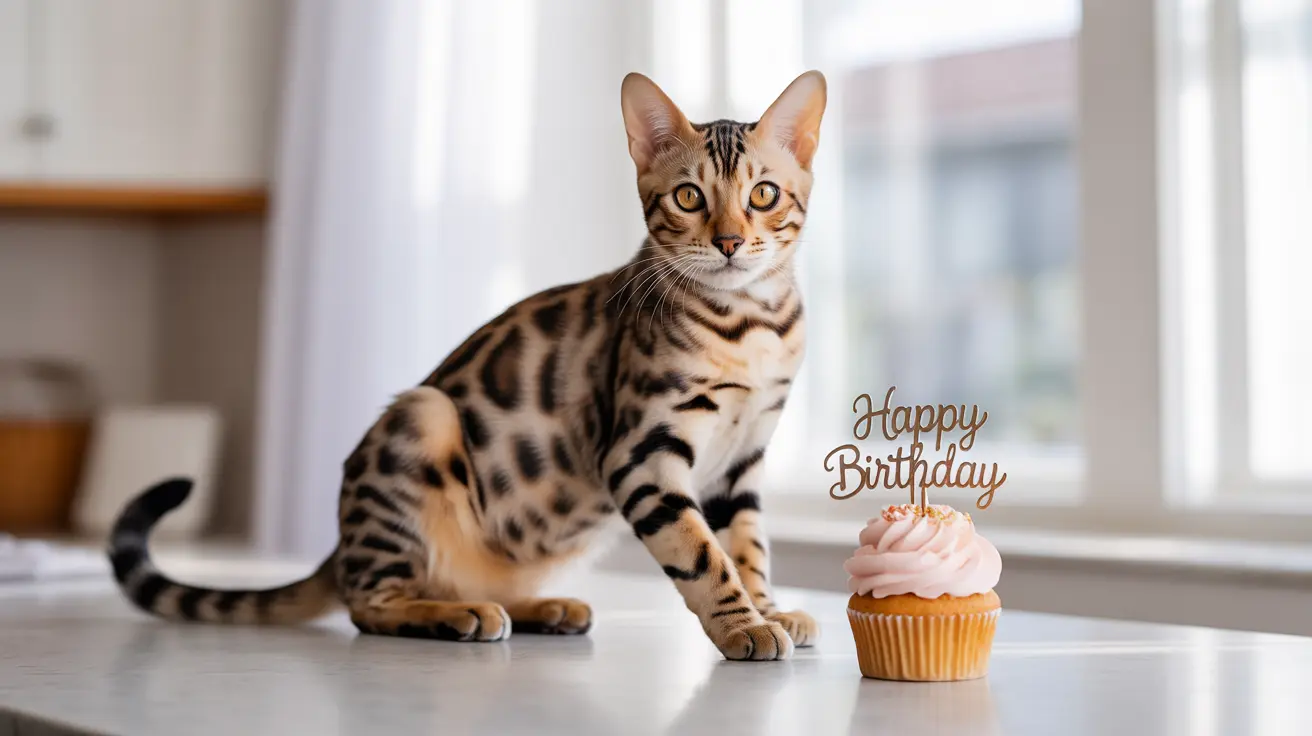If you've ever caught your feline friend showing interest in a frosted cupcake or birthday cake, you might wonder: can cats have frosting? While a tiny lick of plain frosting isn't immediately dangerous, veterinary experts strongly advise against feeding frosting to cats for several important health reasons.
As obligate carnivores, cats have specific dietary needs that aren't met by sugary treats like frosting. In fact, cats can't even taste sweetness, and consuming frosting can lead to various health complications. Let's explore why frosting isn't suitable for your feline companion and what you should know about keeping your cat safe around these sweet treats.
Why Cats and Frosting Don't Mix
Unlike humans, cats lack the ability to taste sweet flavors due to their unique biology. Their attraction to frosting typically stems from its fat content and creamy texture rather than any perceived sweetness. This biological difference is just one of many reasons why frosting isn't appropriate for feline consumption.
Most cats are lactose intolerant, making dairy-based frostings particularly problematic. Even small amounts can trigger digestive issues within hours of consumption. Additionally, the high sugar content in frosting can contribute to obesity and diabetes in cats, conditions that can significantly impact their quality of life.
Dangerous Ingredients to Watch For
Some types of frosting contain ingredients that are toxic to cats and require immediate veterinary attention if consumed:
- Chocolate frosting (contains theobromine, toxic to cats)
- Sugar-free frosting with xylitol (can cause severe hypoglycemia)
- Cream cheese frosting (dairy can cause digestive issues)
- Frostings containing nuts or artificial flavors
Health Risks of Feeding Cats Frosting
When cats consume frosting, they may experience several adverse effects:
- Digestive upset and diarrhea
- Vomiting
- Pancreatitis from high fat content
- Weight gain and obesity
- Dental problems
- Potential diabetes development
Safe Alternatives to Frosting
Instead of offering your cat frosting, consider these veterinarian-approved treats:
- Small pieces of plain, cooked meat
- Commercial cat treats formulated for feline nutrition
- Tiny bits of cooked fish (occasional treat)
- Freeze-dried meat treats
- Cat grass or catnip
What to Do If Your Cat Eats Frosting
If your cat consumes frosting, your response should depend on the type and amount ingested. For small amounts of plain frosting, monitor your cat for signs of digestive upset. However, if the frosting contains toxic ingredients like chocolate or xylitol, contact your veterinarian immediately.
Frequently Asked Questions
Is it safe for my cat to eat frosting or lick a small amount?
While a tiny lick of plain frosting isn't typically dangerous, it's best to avoid letting your cat consume any frosting due to potential digestive issues and lack of nutritional value.
What health risks can frosting pose to cats if they consume it?
Frosting can cause digestive upset, diarrhea, vomiting, obesity, diabetes, and pancreatitis in cats. Some ingredients in frosting can be toxic and potentially fatal.
Why can't cats taste sweetness like humans do, and why are they attracted to frosting?
Cats lack sweet taste receptors and are attracted to frosting primarily due to its fat content and creamy texture, not its sweetness. Their interest usually stems from curiosity or the appeal of dairy fats.
Which frosting ingredients are toxic to cats and require immediate veterinary attention?
Chocolate, xylitol (artificial sweetener), and certain nuts found in frosting are toxic to cats. If your cat consumes frosting containing these ingredients, seek immediate veterinary care.
What are some safe treat alternatives to frosting for cats that I can offer instead?
Safe alternatives include commercial cat treats, small pieces of plain cooked meat, freeze-dried meat treats, and specially formulated feline treats. Always consult your veterinarian before introducing new treats.
Remember, while it might be tempting to share human treats with your feline friend, maintaining their health through appropriate nutrition is the best way to show your love. Keep frosted treats out of reach and stick to cat-specific foods and treats for your pet's wellbeing.






